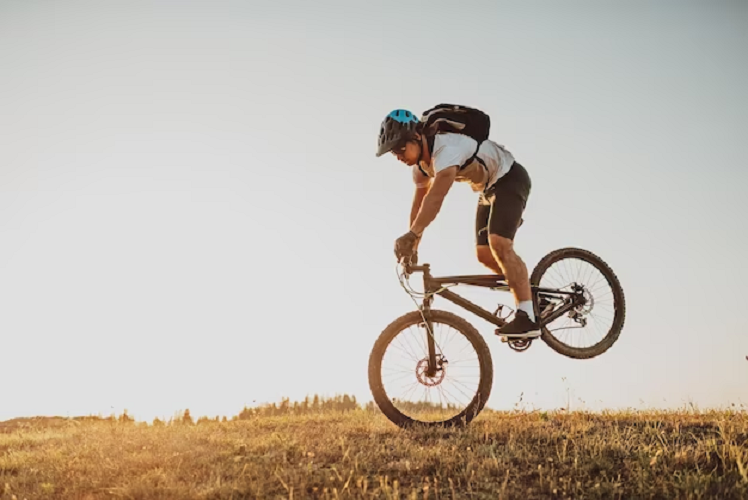
Bike packing adventures have gained immense popularity among outdoor enthusiasts, offering a unique way to explore remote landscapes and embark on multi-day adventures. Choosing the right mountain bike for bike packing is crucial to ensure a comfortable and reliable journey. With a wide range of options available, it’s important to consider specific factors that enhance durability, versatility, and carrying capacity. This article aims to provide a comprehensive guide to help riders choose the perfect mountain bike for their bike packing adventures.
Understanding Bike packing Adventures
Bike packing is a form of self-supported, off-road bicycle touring that combines elements of traditional backpacking with mountain biking. Bike packers travel long distances, carrying all their gear, camping equipment, and supplies on their bikes. Bike packing adventures can range from short overnight trips to multi-day expeditions, traversing various terrains and challenging trails.
Frame Material
The frame material of the mountain bike is a critical consideration as it impacts the bike’s weight, durability, and comfort. The three most common materials for mountain bike frames are aluminum, carbon fiber, and steel.
a) Aluminum: Aluminum frames are lightweight, affordable, and offer excellent strength-to-weight ratio. They provide a responsive ride and are suitable for riders seeking a more aggressive riding style. However, they may transmit more vibrations, reducing comfort during long rides.
b) Carbon Fiber: Carbon fiber frames are extremely lightweight, providing excellent power transfer and comfort. They absorb vibrations well, making them ideal for bikepacking adventures. Carbon frames are also known for their stiffness, which contributes to better energy transfer. However, they tend to be more expensive.
c) Steel: Steel frames are durable, affordable, and offer a comfortable ride due to their natural shock-absorbing properties. They may be slightly heavier but are a great option for riders seeking durability and a more relaxed riding experience. Steel frames have the advantage of being more repairable in remote areas.
Suspension
The suspension system on a mountain bike significantly impacts comfort and control during bikepacking adventures. There are two main types of suspension systems to consider: hardtail and full suspension.
a) Hardtail: Hardtail bikes feature a suspension fork at the front but lack rear suspension. They are lightweight, efficient, and provide better power transfer, making them suitable for bikepacking adventures on smoother or less technical terrains. Hardtail bikes also offer more space for frame bags.
b) Full Suspension: Full suspension bikes have both front and rear suspension systems, offering increased traction, control, and comfort on rougher terrains. The rear suspension helps maintain better contact with the ground, improving traction and reducing fatigue during long rides. However, full suspension bikes may be slightly heavier and have less space for frame bags.
Wheel Size
The wheel size of a mountain bike is an important consideration for bikepacking adventures. The three most common wheel sizes available are 26-inch, 27.5-inch, and 29-inch.
a) 26-inch: Historically the standard wheel size, 26-inch wheels offer maneuverability and are lighter than larger wheel sizes. They are suitable for bikepacking adventures that involve technical trails and tight corners. However, they may not roll over obstacles as smoothly as larger sizes.
b) 27.5-inch: Also known as 650B, these wheels strike a balance between maneuverability and rolling efficiency. They are versatile and suitable for a wide range of terrains, making them popular among bikepackers.
c) 29-inch: 29-inch wheels are known for their ability to roll over obstacles with ease, providing better traction and stability. They maintain momentum well, making them suitable for bikepacking adventures where speed and efficiency are crucial.
Gear Range
The gear range of a mountain bike is essential for bikepacking adventures, as it determines the bike’s ability to tackle various terrains and carry heavy loads. A wide range of gears is crucial for conquering steep climbs and maintaining a comfortable cadence on long rides. There are two primary gearing options to consider:
a) 1x: A 1x drivetrain uses a single front chainring with a wide range cassette at the rear. This setup simplifies shifting, reduces weight, and improves chain retention. It is particularly popular in bikepacking adventures for its simplicity and reliability.
b) 2x or 3x: Traditional drivetrains with two or three front chainrings offer a wider range of gear ratios. They are preferred by bikepackers who require a greater range of gears for tackling steeper climbs or carrying heavier loads.

